Lake house log cabin flooring: hardwood or engineered or laminate???
lakelife2020
3 years ago
Featured Answer
Sort by:Oldest
Comments (13)
Patricia Colwell Consulting
3 years agolakelife2020
3 years agoRelated Discussions
Elegance Hardwood vs Max Windsor vs Urban Floor
Comments (14)I have some input to add myself. My uncle was the purchasing manager for Shaw Wood floors for quite some time until he left recently, and put me in touch with one of the manufacturers of engineered wood flooring that Shaw had purchased from, who is also local to me (SoCal). I went there today and spoke with the owner's son who was very helpful. Based on his knowledge on wood floors in general, and of his competitors, I am inclined to listen to him. Max Windsor: a relatively new player in the game, started by a Chinese agriculture business mogul, and has had many claims since its inception due to their relatively new footprint in the marketplace (although they do employ some industry vets). Good idea to stay away as they are still in the development stage. I was being pushed by many of the local flooring stores into this brand, and even got some scary low prices, which I think confirm their inability to compete at this time with other manufacturers. Elegance: Awful quality wood is used in the engineered core. Urban Floor: Relatively new to the game, but good quality engineered core, which is probably the most important thing in engineered wood flooring. Their product is actually pretty good for the price point. Garrison: nothing very special, middle men who charge more for products available for a lesser price elsewhere. Due to this factor, he suggested I look elsewhere. The product they manufactured themselves was from a 11 ply birch core, and they even manufactured the birch which they used in the core, and use a proven German adhesive to hold the plys together, and all plys are of the same density. The glue is very resistant to water and holds together extremely well based on us submerging a piece of their flooring into a tub of water. I am going back there over the weekend, but thought I would share the highlights from today's conversation about the few companies I had questions about....See MoreHardwood floors throughout?
Comments (35)Actually, DH had reservations about wood period. He thought the tile should go throughout the house, and I said NO. He installed the Bellawood in the front rooms of his Cape up in Massachusetts, and it was the narrow boards of the select ash, very light, and it was gorgeous. That house has lower ceilings than here, and it was basically more individual rooms and not going to be open concept like our living/dining/kitchen/laundry will wind up being. And, our cottage with beadboard could better use the 5" wide boards, also select ash. It sits in my Teahouse under lock and key, with the heat or a/c keeping it properly conditioned for use. I got a bit more than DH estimated we needed, thinking he would skimp on what amount was required, and so there will be enough to have a little left over.....and I will have no problem extending the back porch/addition another foot all the way across, and to floor the tiny new entry as part of the living room. If that doesn't quite make it, well, I can put tile in the entry. It was MoonPie who hiked his leg on everything, even just a tiny squirt on the house plants, the chair legs, the bed covers that hung down far enough for him to reach, the laundry basket, the garbage can.....I became expert at recognizing what HE did and what Dixie might do. She specialized in the bath mat, since she knew business should be conducted IN THE BATH ROOM. Which is why I am so impressed with Dolly and her arriving at 7 weeks of age already, in effect, PAPER TRAINED. And she cannot yet go outdoors to learn about grass, because she needs her final shots to avoid parvo virus. What a charmer she is though....See MoreCan a messy person have hardwood floors?
Comments (24)Absolutely NOT. A messy person can never ever, ever, have a wood floor. They must only have a gray cement floor. Okay I am being sarcastic. I can not help myself I am still laughing from NYE. happy new year... Pardon me my dear, I digress. Messy people should only have gray dirt colored cement floors with drains lowerd slightly in the center so the water can wash away the dirt. And they can have a hose attached to the wall to keep the rooms clean. The water washes away all the mess. No furniture, no tables, no chairs, no dishes (that is too messy), no lights because lights get dusty, no windows because windows need cleaning, beds? Never, they need fresh linens that get dirty.... Let me review the question? Can a messy person have a wood floor ? No never. I would know this. Because I have wood floors on my entire first floor. Yes, I am always clean. Never dirty. Because I am perfectly clean, I never have tiny micro dust bunnies under my kitchen stools, I never have dog hair from my boxer dogs or their kennel mates or the relative dogs that pop in to visit, I never have bits of playdo, candy, cookie crumbs, trails of snow shoe puddles, crayon shavings, barbie doll hair, water, soda, sugar, flour, sparkles, glitter, cut pieces of paper, spilled salt, Christmas tree needles, dirt from the driveway or boots, chips of unidentified items about my floors.... Never, never do I have dust, ashes, cinders, dirt, earth filth, flakes, fragments, gilings, granules, grime, grit, ground, lint, loess, powder, refuse, sand, smut, soil, soot,pencil shavings... I live in a bubble of perfection. ~boxerpups Please know I am being silly, sometimes humor does not come across in print but please know I am trying to be silly. I am truly a messy lived in kind of lady. I am not clean and I have wood floors. Thank God, because wood hides the dirt. I love my wood floor and my messy family so much, I want to put wood floors in all the bedrooms because it really is easier to keep clean. And I have had tile and carpet. Toss the carpet put in wood. ~boxerpups the real me not clean at all....See More1970's MN Lake Home upstairs Hardwood or Tile?
Comments (2)For tile, the floor has to be 'stiff' enough. This is called 'deflection'. Commonly, after tearing out the old flooring, an extra 3/4" of plywood is screwed down, before installing a 1/4" cement board and then tile. The size and spacing of the floor joists will determine what you need to do to the subfloor. A good tile guy will be able to figure this out....See MoreSammy
3 years agolakelife2020
3 years agoDana
3 years agolast modified: 3 years agolakelife2020
3 years agoDana
3 years agoPeke
3 years agolast modified: 3 years agoSJ McCarthy
3 years ago
Related Stories
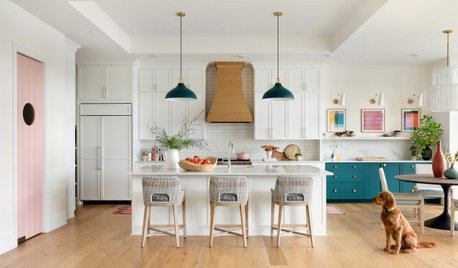
HOUSEKEEPINGHow to Clean Hardwood Floors
Gleaming wood floors are a thing of beauty. Find out how to keep them that way
Full Story
TRANSITIONAL HOMESHouzz Tour: An Alabama Lake House Grows With the Family
A funky 1970s cabin loses its fake wood paneling and shag carpeting but stays true to its relaxed roots
Full Story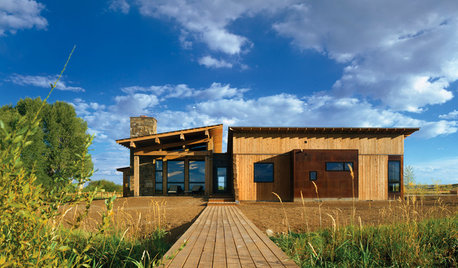
HOUZZ TOURSHouzz Tour: Deconstruction Reshapes Log Cabin Style
A river runs through it, but this modern Wyoming home is just as notable for its inventive architectural take on the log cabin archetype
Full Story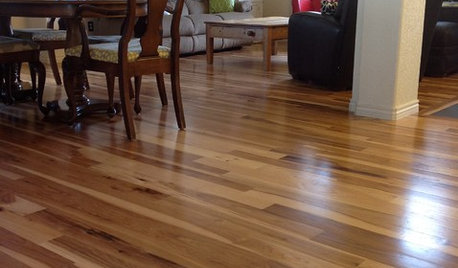
MATERIALSWhat to Ask Before Choosing a Hardwood Floor
We give you the details on cost, installation, wood varieties and more to help you pick the right hardwood flooring
Full Story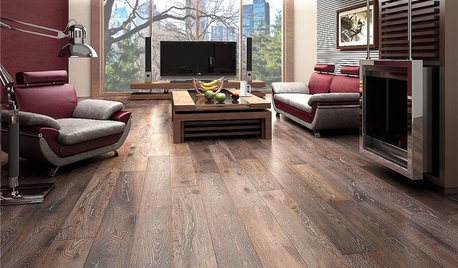
REMODELING GUIDESWhen to Use Engineered Wood Floors
See why an engineered wood floor could be your best choice (and no one will know but you)
Full Story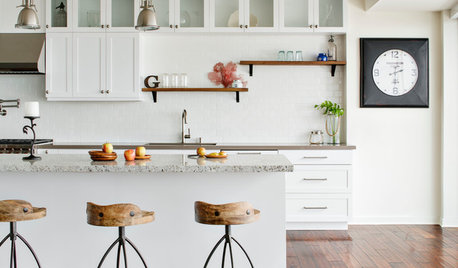
REMODELING GUIDESWhat to Know About Engineered Wood Floors
Engineered wood flooring offers classic looks and durability. It can work with a range of subfloors, including concrete
Full Story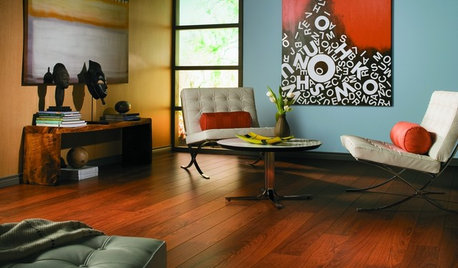
REMODELING GUIDESLaminate Floors: Get the Look of Wood (and More) for Less
See what goes into laminate flooring and why you just might want to choose it
Full Story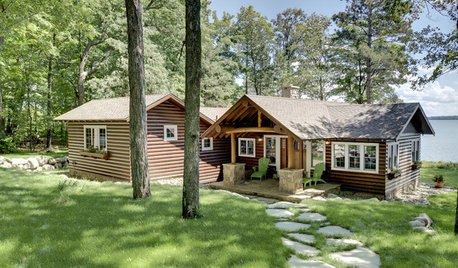
ARCHITECTURELake House Collection: 5 Cozy Camps Across the U.S.
Pull up the canoe and relax into the views of these comfy lake house retreats from traditional to contemporary
Full Story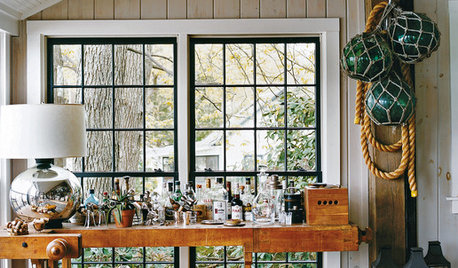
DECORATING STYLESThe Comfy Lake House Rule Book
Bunk up and get the s'mores supplies ready for some old-school lake camp weekending
Full Story
REMODELING GUIDESContractor Tips: Smooth Moves for Hardwood Floors
Dreaming of gorgeous, natural wood floors? Consider these professional pointers before you lay the first plank
Full Story
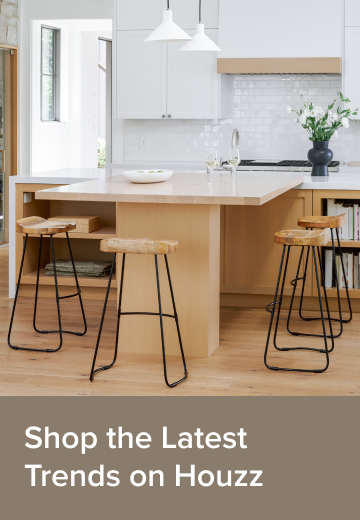
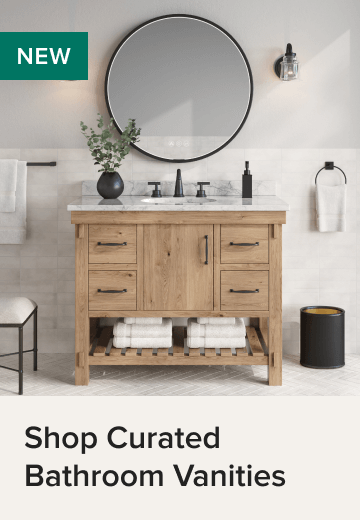
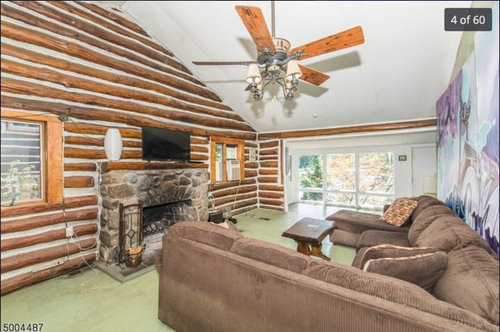
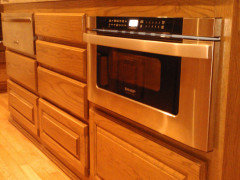
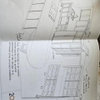

isabellagracepan